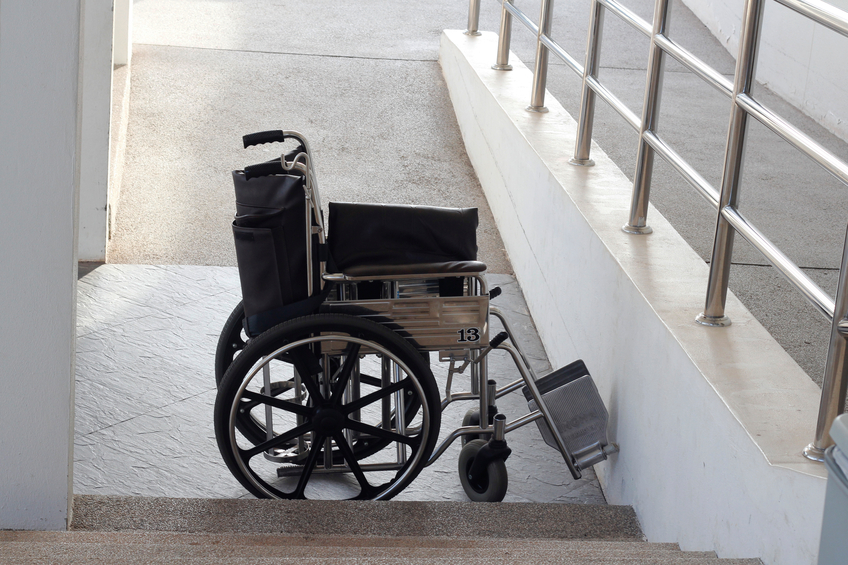Building Design 24 PDH Discount Package
Courses in this Package
Airport Terminal Planning (A08-001)
Americans with Disabilities Act (ADA) Overview (A02-005)
Building Terrorism Mitigation - Building Design (F04-001)
Performance-Based Design (A01-001)
The MEP Design of Building Services (M06-034)
VA Building Information Modeling (BIM) (B03-002)

This online engineering PDH course provides guidance on the process of planning airport passenger terminal facilities.
This course is intended to give the user a basic explanation of each key subject and functional area of airport terminal planning, and to provide references to more detailed resources. The course is presented in three main parts: Initial Planning Considerations, Terminal Planning Process, then Terminal Planning Methodologies and Tools.
This 8 PDH online course is applicable to civil and building engineers, design and construction professionals, consultants, airport operators, FAA personnel, and others involved in planning airport terminal facilities, during or after the master planning process.
This PE continuing education course is intended to provide you with the following specific knowledge and skills:
- Familiarizing with the initial planning considerations
- Familiarizing with terminal planning process
- Understanding the planning methodologies and tools
- Learning about the important considerations of terminal building space, components, functional relationships, and configurations
- Familiarizing with the terminal apron areas
- Understanding the ground access and circulation system
- Learning about sustainability considerations in terminal planning
Upon successful completion of the quiz, print your Certificate of Completion instantly. (Note: if you are paying by check or money order, you will be able to print it after we receive your payment.) For your convenience, we will also email it to you. Please note that you can log in to your account at any time to access and print your Certificate of Completion.

This online engineering PDH course provides an overview of the Americans with Disabilities Act as it applies to facility design.
For individuals with disabilities, the Americans with Disabilities Act gives civil rights protections similar to those provided to individuals on the basis of race, color, sex, national origin, age, and religion. It guarantees equal opportunity for individuals with disabilities in public accommodations, employment, transportation, state and local government services, and telecommunications.
This 2 PDH online course is intended for all engineers involved in the design of facilities accessible to the public and regulated by the
This PE continuing education course is intended to provide you with the following specific knowledge and skills:
- Familiarizing with the types of facilities covered
- Understanding "public accommodation"
- Learning about the various requirements for accessible facilities
- Understanding when a "direct threat" to health or safety is present
- Understanding "readily achievable" barrier removal for existing facilities
- Familiarizing with the legal enforcement mechanisms available
- Learning about available tax credits and deductions for employers
In this professional engineering CEU course, you need to review the course document titled, "American with Disabilities Act (ADA) Overview" which is based on the original document (http://www.ada.gov/qandaeng.htm) published by the U.S. Equal Employment Opportunity Commission of the Civil Rights Division of the U.S. Department of Justice (DOJ), last updated on
Upon successful completion of the quiz, print your Certificate of Completion instantly. (Note: if you are paying by check or money order, you will be able to print it after we receive your payment.) For your convenience, we will also email it to you. Please note that you can log in to your account at any time to access and print your Certificate of Completion.

This online engineering PDH course addresses explosive blast and CBR concerns from terrorist attacks, highlighting mitigation measures that may be applied to building elements, including architectural, structural, and building envelope systems. These measures are designed to minimize the loss of life through deterrence and detection, as well as strengthening of the building against a variety of terrorist tactics.
After the site design considerations to enhance protection have been taken into account (as applicable), additional building design measures, such as hardening, must be considered to protect building occupants. The primary focus of this course is the protection of buildings where the occupants are the primary asset.
This 4 PDH online course is applicable to engineers, planners, architects, landscape designers, construction and operations personnel, security and law enforcement agents, as well as consultants and contractors to gain a better understanding in determining which asset protection measures are appropriate and cost-effective for incorporation into the building design against potential terrorist attacks.
This PE continuing education course is intended to provide you with the following specific knowledge and skills:
- Optimizing security-related architectural considerations including building configuration and detailing as well as space design
- Understanding the building’s structural and non-structural systems to determine the design features needed to protect against the potential collapse
- Mitigating the effects of the explosion on the building envelope
- Identifying and implementing the major security functions of the mechanical and electrical systems
- Enhancing the performance of fire protection and communication systems for facility protection
- Designing electronic and physical security systems to prevent unauthorized access and safeguard people against terrorist attacks
In this professional engineering CEU course, you need to review Chapter 3 "Building Design Guidance" of the FEMA Publication tilted, "Mitigating Potential Terrorist Attacks Against Buildings" (FEMA 426).
Upon successful completion of the quiz, print your Certificate of Completion instantly. (Note: if you are paying by check or money order, you will be able to print it after we receive your payment.) For your convenience, we will also email it to you. Please note that you can log in to your account at any time to access and print your Certificate of Completion.

This online engineering PDH course provides an overview of performance-based design process. Performance-based design is the process or methodology used by design professionals to create buildings that protect functionality and the continued availability of services. Building performance is an indicator of how well a structure supports the defined needs of its users. Although this material is written for schools, it is applicable to all buildings.
This 1 PDH online course is applicable to structural engineers, design professionals, construction contractors, building owners and other technical personnel who are interested in gaining a better understanding of performance-based design.
This PE continuing education course is intended to provide you with the following specific knowledge and skills:
- Understanding prescriptive vs. performance-based design
- Understanding the performance-based design process
- Understanding acceptable risk and performance levels
- Learning about considerations for achieving continuous operation performance level
- Understanding performance-based flood design, high-wind design and seismic design
In this professional engineering CEU course, the student will review Chapter 2 of the FEMA publication "Design Guide for Improving School Safety in Earthquakes, Floods, and High Winds", FEMA P-424, December 2010.
Upon successful completion of the quiz, print your Certificate of Completion instantly. (Note: if you are paying by check or money order, you will be able to print it after we receive your payment.) For your convenience, we will also email it to you. Please note that you can log in to your account at any time to access and print your Certificate of Completion.

This online engineering PDH course provides fundamental knowledge and understanding of Mechanical, Electrical and Plumbing (MEP) systems in buildings.
People in urban settings spend between 80 and 90% of their time in indoor spaces both during work and during leisure time. The aesthetics, efficiency, economy, comfort, safety and of modern buildings require close collaboration across multiple disciplines.
With the emerging trend of high-rise buildings and emphasis on sustainability, the MEP systems are becoming increasingly complex and occupying larger portions of building project work. The MEP design no more relates only to the visible elements such as lights, radiators, convectors, registers, outlet grilles, or ducts - which are the end nodes of the systems - but also to the infrastructure that supplies those elements.
Although the primary responsibility of delivering high quality building projects rests with the lead architect, the knowledge and expertise of the MEP engineers play a very important role in supporting the architect’s vision.
This 6 PDH online course is intended primarily for mechanical, electrical and plumbing engineers as well as architects involved in the design and installation of MEP systems for buildings.
This PE continuing education course is intended to provide you with the following specific knowledge and skills:
- Understanding the architectural aspects of modern energy efficient buildings
- Acquiring fundamental knowledge of MEP systems including:
- HVAC Systems: DX systems, Chilled water systems, etc.
- Fire protection systems: Water supply, standpipe, hydrants, automatic sprinklers, etc.
- Fire alarm systems, smoke detection, annunciation, addressable devices, etc.
- Potable water supply and distribution, waste water and storm water
- Power supply and distribution: busway, cable duct, raceways, etc.
- Lighting: Interior, exterior, and emergency lighting
- Control systems, security systems (CCTV, audio/video), data networks etc.
- Vertical transportation: traction and hydraulic elevators
- Noise and acoustics for buildings
In this course, you need to review the course document titled, “The MEP Design of Building Services”.
Once you complete your course review, you need to take a multiple-choice quiz consisting of thirty (30) questions to earn 6 PDH credits. The quiz will be based on this course document.
Upon successful completion of the quiz, print your Certificate of Completion instantly. (Note: if you are paying by check or money order, you will be able to print it after we receive your payment.) For your convenience, we will also email it to you. Please note that you can log in to your account at any time to access and print your Certificate of Completion.

This online engineering PDH course is an overview of the VA's requirements related to the use of BIM on VA projects.
In today's complex building designs there is a movement to use BIM (Building Information Modeling) as a tool for both design and construction. In addition, BIM is used in facility management. The VA's Office of Construction and Facilities Management (CFM) has determined that Building Information Modeling (BIM) represents both an enhanced technology and a process change for the architecture-engineering-construction-facilities management industry. VA is committed to moving both the organization and its service providers to BIM as effectively and efficiently as possible, and to integrating BIM process requirements and Integrated Project Delivery (IPD) methodologies into its delivery requirements.
This 3 PDH online course is applicable to all engineers, architects, design and construction personnel, technical staff and facility personnel who are interested in gaining a better understanding of BIM technology.
This PE continuing education course is intended to provide you with the following specific knowledge and skills:
- Implementation of BIM in VA projects
- BIM Management Plan
- BIM Roles and Responsibilities
- Model Sharing
- Collaboration Procedures
- Modeling Requirements
In this professional engineering CEU course, you need to review the publication, "VA BIM Guide, v1.0", published by the Department of Veteran Affairs, dated April 2010.
Upon successful completion of the quiz, print your Certificate of Completion instantly. (Note: if you are paying by check or money order, you will be able to print it after we receive your payment.) For your convenience, we will also email it to you. Please note that you can log in to your account at any time to access and print your Certificate of Completion.